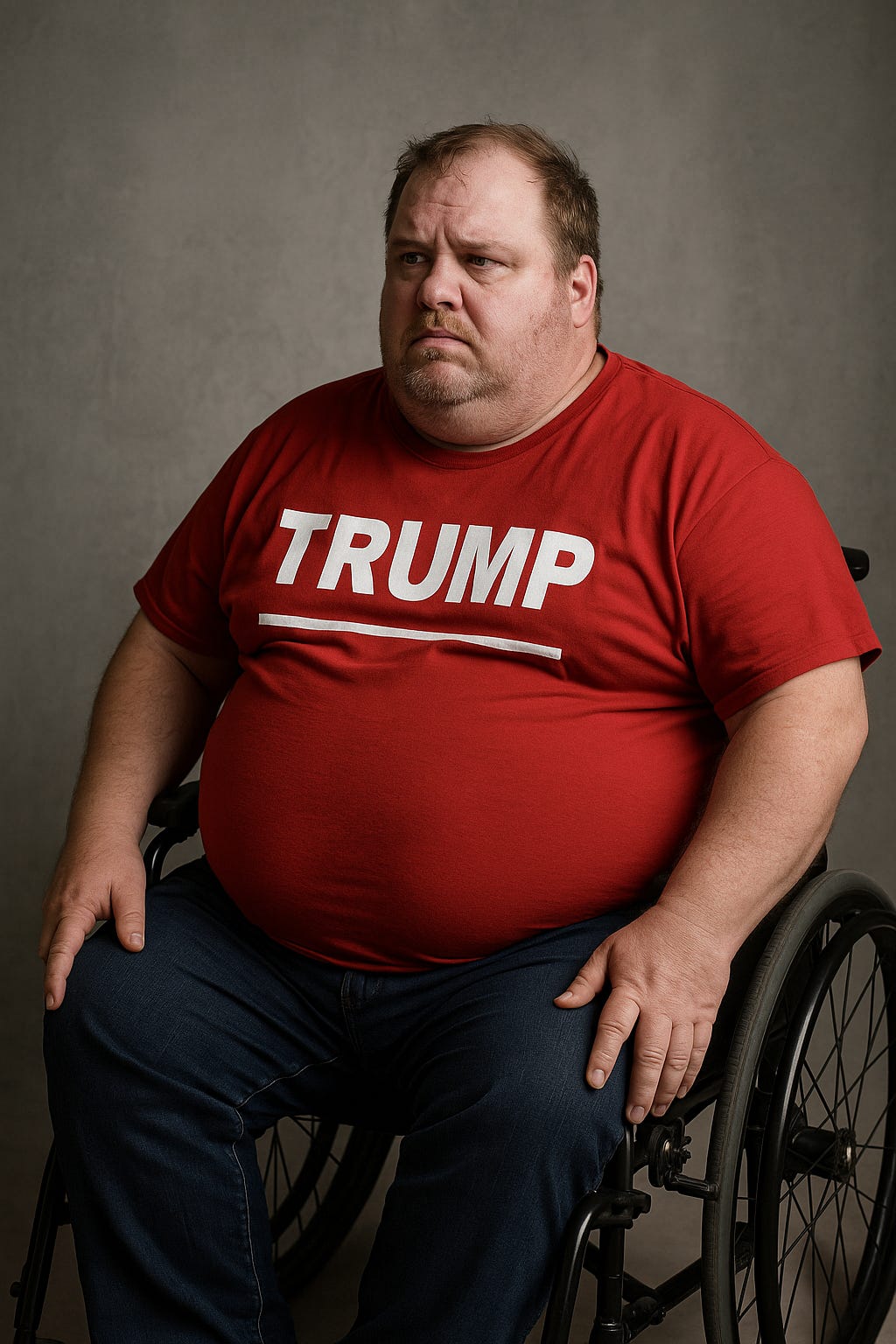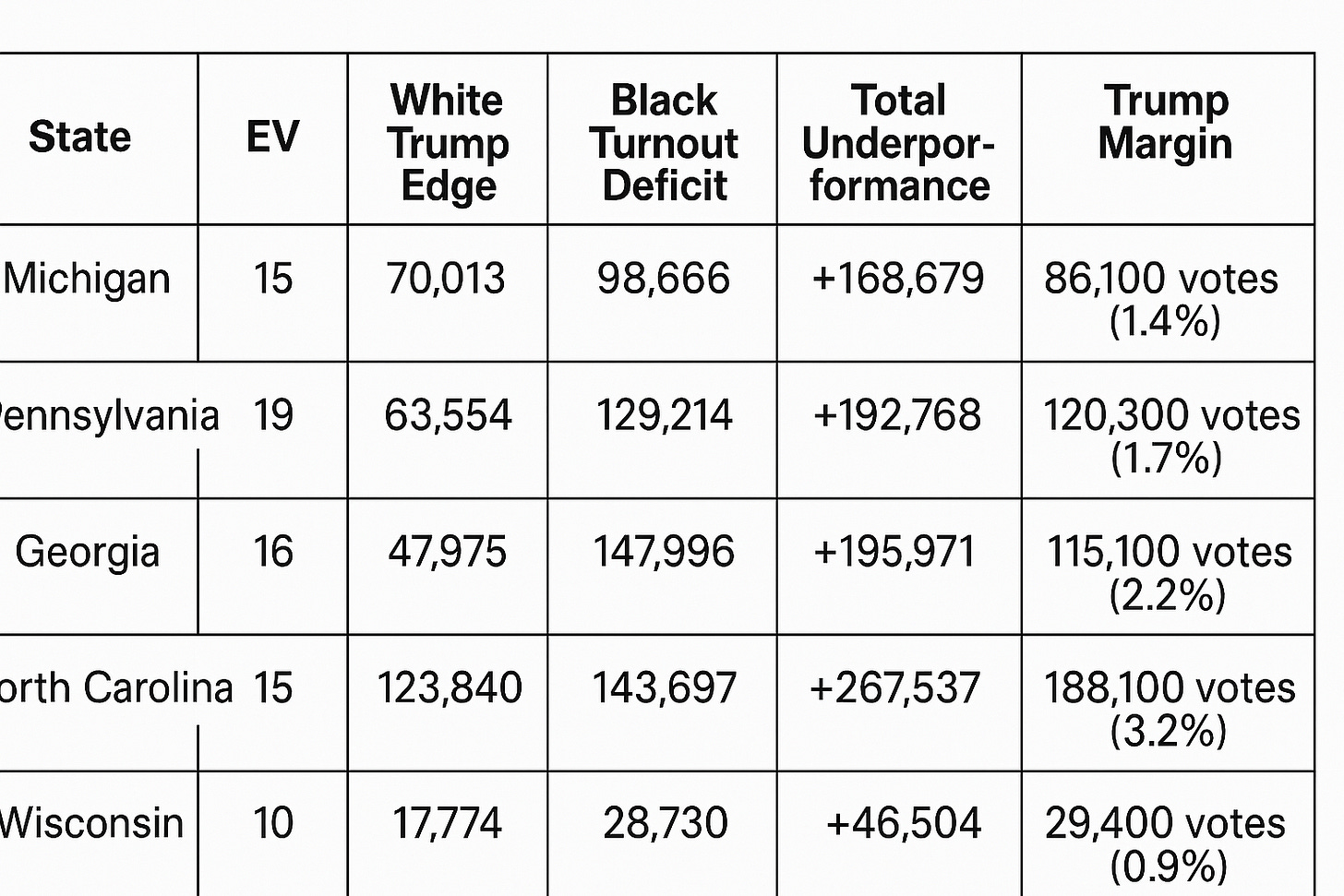Medicaid Recipients Cost Harris the 2024 Election
The voters most helped by the welfare state stayed home—or voted for Trump
Medicaid covers over 80 million Americans and costs more than $800 billion a year, making it the largest means-tested welfare program in the country. It serves the poorest Americans: the lowest rungs of the working class and the unemployed. On paper, it should be a Democratic advantage. In practice, directing over 3% of GDP to the poorest and least healthy yielded Democrats surprisingly little political return.
Two dynamics doomed Kamala Harris. First, Black Medicaid recipients didn’t show up. Despite an 89/11 Democratic lean, their turnout lagged far behind the general electorate. Second, white Medicaid recipients leaned toward Trump. The median white Medicaid voter cast a ballot against the party that wants to spend $10,000 per year on his health care. Not by overwhelming margins—but in enough volume, and in precisely the right states, to tip the election.
The electoral math was ruthless, and it didn’t take much. The result was decisive. Harris lost Michigan, Pennsylvania, Georgia, North Carolina, and Wisconsin. Winning those five states would have given her 301 electoral votes—and the presidency. Instead, the very people most materially invested in the outcome either didn’t vote or sided with her opponent.
Republicans are moving fast: block grants, work requirements, tighter eligibility. This may be rational. Medicaid serves people who either don’t vote—or vote against it. It has no organized base. Democrats warned it would be gutted and were ignored.
Democrats spent years expanding Medicaid, defending it in court, and shielding it from budget cuts. The program delivers roughly $10,000 per beneficiary per year—one of the most generous targeted benefits in American politics. But the voters who rely on it didn’t defend it. Many didn’t vote. Others backed the party trying to cut it. And in five key states, that underperformance was enough to swing the outcome.
That’s not a messaging failure. It’s a structural liability. Programs like Medicaid, which serve populations that are transient, overburdened, or politically alienated, don’t translate into votes. They don’t build coalitions. They don’t defend themselves. When Trump and Harris were neck and neck, beneficiaries didn’t show up—and abandoned Harris to defeat.
In countries like India, the pattern is reversed: the poor vote at higher rates than the rich. Indian political parties take them seriously because they show up. In the U.S., the voters with the most at stake often stay home—and sometimes vote to dismantle the very programs that sustain them.
I’ve long voted Democrat—not because I like woke ideology or affirmative action, but because I believe everyone should have basic health care. When the people I’ve spent years defending turn around and elect a man who incited a mob to storm the Capitol, I start to question that sympathy.
Maybe next time, the people most dependent on government won’t vote to burn it down.
Appendix: Medicaid Voter Impact in 2024 Swing States
These figures model swing-state voting behavior among Medicaid recipients in 2024, isolating two key effects:
"White Trump Edge" estimates the number of net votes Trump gained from white Medicaid recipients, based on their share of the Medicaid population, turnout rate, and his margin among them. I assume white Medicaid recipients voted 7 points (14 net) more Democratic than non-college whites in each state
"Black Turnout Deficit" estimates how many net votes Harris lost because Black Medicaid recipients turned out at lower rates than the general population, despite voting overwhelmingly Democratic. Black Medicaid recipients are modeled with an 89/11 split.
"Total Underperformance" is the sum of these two effects: the net number of votes by which Medicaid recipients worsened Harris’s position in each state.
In each of these states, the combined effect of white Medicaid voters leaning Republican and Black Medicaid voters failing to turn out at average rates produced a swing larger than Trump’s margin of victory. If those two groups had performed differently—white recipients splitting evenly, Black recipients voting at average rates—Harris would have won all five states, and with them, the presidency.



